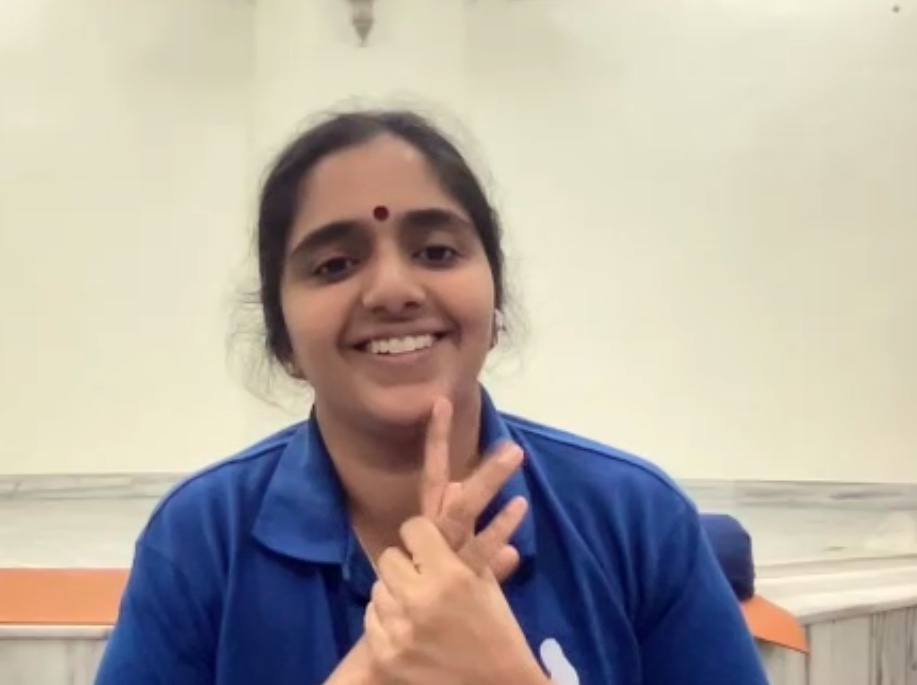Building Discrimination with Warrior I

Day 3 of Abhijata’s celebration was a study of Virabhadrasana I (Warrior I). It reminded me of the approach Prashant Iyengar takes with his book, Alpha and Omega of Trikonasana. We looked at Virabhadrasana I in different contexts and timings and techniques within a sequence, building awareness and discrimination along the way.
The first physical awareness of any approach to posture, and this standing posture in particular, is of the limbs working in service of the trunk and spine. Are we able to extend the arms and extend the legs in such a way that brings lift and lightness and extension to the trunk and spine? If we hit a road block, what techniques or props might we use to bring more awareness to lead us to this end? It could be that even ANOTHER pose will lead us in a better direction if we place it before or after the Virbhadrasana I itself.
Each category of pose also feeds into others – like the standing pose of Virabhadrasana I feeding into Back arches and visa versa. Abhijata spoke of “exposure” to all aspects of asana so that we do not develop fear or avoidance of any one thing over time. I would call this “exposure therapy” of yoga as I personally have had this experience myself. If I was not made to do forward bends by my teachers, or they were not part of the “cycle” of Iyengar Yoga that was mentioned yesterday, I guarantee they would have stayed at the periphery of my practice. All the various ways and approaches Iyengar Yoga provides to move myself toward them and through them and in them deeper has given me courage and strength to begin to thrive in (and maybe even enjoy) those positions. I think now how much I would have missed without exposing my Self on those layers and in those ways, no matter how scary and difficult those layers might have been or continue to be. How many of us have those postures we avoid in our own practice, only to be asked at some point by your teacher to do them?
This is the daily reminder of how important a teacher is and why this tradition is so effective. Abhi has spoken at length about her initial trepidation of having to teach on ZOOM – the moral and safety implications, and the inability to really “see” students which is a hallmark of our method. And though she decided to embrace it, to face this challenge and find ways to thrive, she reminds us that online is NO replacement for off-line when it comes to teaching. This goes for studentship as well. The ability for the teacher and student to be together and learn from each other is imperative. If we are at home as a student, we may easily skip poses, turn of the camera, or maybe we are just doing a video where there is no feedback at all. We can delude ourselves that we are “doing” and that is enough. But, as we have been discussing these past few days, the “doing” is just the beginning – the “doing” must include reflection, awareness, and ultimately the quality of discrimination. What is real and not real? What is true and not true? What do I think is happening and what is actually happening? What technique should I use and when? So much knowledge and information comes from this type of exploration through yoga.
In exploring Virabhadrasana I, we used other poses like Urdhva Mukha Svanasana, Purvottanasana, Ustrasana, Urdhva Danurasana, Eka Pada Setu Bandha on the brick, and then ultimately Setu Bandha Sarvangasana drop-overs to compare and contrast, build and support. These actions of course all open the chest and are great bodily preparation for the breath-work of Pranayama.
“Every emotion has a gesture”, Abhi said this morning. And though she was most referring to creating quiet in the mind by softening the face in inversions and Savasana, I feel like we could say that every asana carries an emotion or brings about an emotion. It is up to us to build awareness and sensitivity around this so that we can also use this as a discriminative factor for practice. Am I feeling dull or sad? Am I over anxious or mentally distracted? What postures in the body might create a new and more balanced frame of mind? How can my body move to facilitate a better, more complete breath? Etc…
As goes the “cycle”, we might be in store for a restorative class with Pranayama tomorrow for our last class together. Or, maybe there will be a surprise…stay tuned…